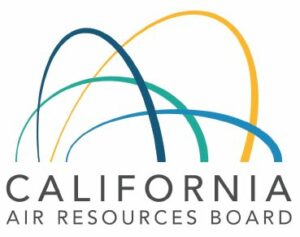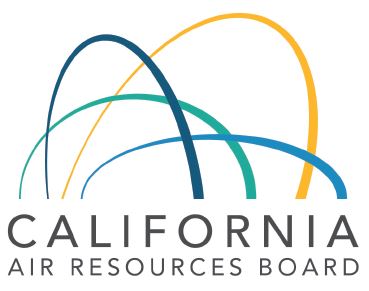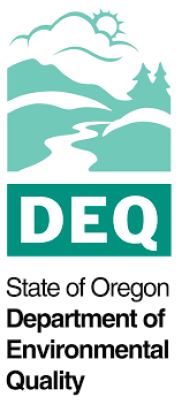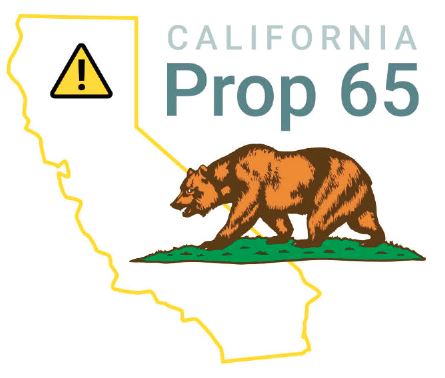SCAQMD
In May, the South Coast Air Quality Management District (SCAQMD) held two workgroup meetings.
May 21
SCAQMD staff held its second workgroup meeting concerning Rule 1151 Automotive Refinish Coatings. SCAQMD is attempting to prohibit parachlorobenzotrifluoride (PCBTF) and tertiary butyl acetate (tBAc) from Automotive Refinish Coatings. SCAQMD amended its rule 1168 on Adhesives last year to accomplish the same task.
For Rule 1151, SCAQMD is considering raising the volatile organic compound (VOC) limits higher in certain categories to make it easier for manufacturers to reformulate without PCBTF and tBAc. This is a significant move for SCAQMD, as raising VOC limits is not something that it usually does. The higher limits for these coating categories would be either the current European VOC limit or the current U.S. Environmental Protection Agency (EPA) VOC limit for Refinish Coatings. By raising the category limits, SCAQMD staff will be able to phase out these compounds at a much faster pace; staff is currently considering a two-year phase-out schedule to eliminate PCBTF and tBAc.
SCAQMD will initially raise the VOC limits for certain categories that have PCBTF and tBAc so that formulators can remove these compounds with VOCs. SCAQMD will then set another schedule to once again lower these certain categories where the VOC is being raised. It is a two-step process. Ultimately, SCAQMD wants VOC limits to return to where they are now.
May 29
This workgroup meeting pertained to Rule 1171 Solvent Cleaning, which is similar to Rule 1151 and Rule 1168, and was developed to phase out the use of PCBTF and tBAc. However, SCAQMD staff found little use of these two compounds in Solvent Cleaning products. Thus, the focus has changed.
SCAQMD staff is now focused on the 160 fluid ounce/per day exemption for Aerosol Products, which has been in the Rule since 1996. Staff has found aerosol product that exceeds its 25g/l limit but meets current California Air Resources Board (CARB) limits for the Aerosol Products category. It is worth noting that some of the products found may exceed CARB limits for Aerosol Products; if true, the products could then be subject to enforcement actions.
Currently, staff believes removing the exemption could have an effect on small cleaning operations, as well as dealerships and auto repair/collision repair shops.
Staff has stated that its next meeting is set for the third quarter and the Board hearing to finalize the rule is set for the fourth quarter. Thus, we need to review this exemption quickly and get comments back to SCAQMD.
AIM Act
For months now, we have shared information on the EPA American Innovation & Manufacturing (AIM) Act. As a reminder, as of Jan. 1, 2025, EPA is restricting the use of all hydrofluorocarbons (HFCs) with a Global Warming Potential (GWP) greater than 150 in aerosol products (some categories are an exception, and will have until Jan. 1, 2028, to utilize HFCs higher than 150 GWP).
Therefore, as of Jan. 1, 2028, all aerosols can only use HFCs with a GWP of 150 or less. This includes an extension for the use of HFC-43-10mee and HFC-245fa in aerosols until Jan. 1, 2028. Remember, HFC-152a has a less-than 150 GWP and therefore is not restricted under this rule.
First labeling reminder
Companies need to be aware that the use of any HFC, including HFC-152a, for any aerosol product—other than technical aerosol products listed in the rule, metered dose inhalers and defense sprays—the label must disclose the HFC[s] that are in the product, starting Jan. 1, 2025. For the technical products listed in the rule, the label must disclose the HFC[s] that are in the product starting Jan. 1, 2028.
It is important to note that the deadlines—including label disclosure—are for products manufactured on those dates and beyond. There are no restrictions on products manufactured before those dates under the AIM Act (although please be aware of the restrictions/requirements that individual States may have on certain HFCs). SPRAY
OTC Meeting
On April 22, the Ozone Transport Commission (OTC) held its Spring virtual meeting, during which it was mentioned that the Consumer Model Rules were edited. Changes included administrative and formatting updates, such as modified dates and rules. As well, it was reported that the Consumer Products Phase I, II, III and IV were reposted.

Next on the agenda is the Annual Public Meeting in Portland, ME, on June 13, 2024.
Oregon
Oregon is considering a Consumer Products volatile organic compound (VOC) regulation. Our first pre-meeting was in January. Oregon has informed Industry that it is moving forward with Consumer Products and Architectural Coating rulemakings. The State was planning a Rule Advisory Committee (RAC) meeting in mid- to late May.

It is likely that Oregon will put in the OTC Model Rule IV rule. There will be more to come on this issue.
CARB
The California Air Resources Board (CARB) Consumer Products survey is likely to to be further delayed. Industry has expected the survey’s release for more than seven months now; however, CARB staffing and other issues have delayed this release. It is doubtful that we will see the survey any time before July 2024 at the earliest.
Remember, this survey will be the beginning of CARB’s next rulemaking, which is expected to be presented to its executive board in 2027. CARB is targeting 20 tons of VOC emissions reductions per day or equivalent, which is two-and-a-half times the VOC emission reductions in the last rulemaking.
Other States
Clark County, NV, showed interest in developing a rulemaking on Consumer Products VOC regulations. To date, the County has not acted on this rulemaking but has moved ahead with other VOC regulations.
Similarly, New Jersey has stated that it plans to have a rulemaking on Consumer Products to update its OTC Model Rule II to OTC Model Rule IV. However, the Garden State has not yet released a timeline for this rulemaking. SPRAY
New York
On March 13, the State of New York held a webinar to accept comments on amendments to 6 NYCRR Part 494 on the use of hydrofluorocarbon substances (HFCs). This affects aerosol products and small containers of automotive refrigerants. The amendments mainly align with the newly-finalized Technology Transitions Program by the U.S.
Environmental Protection Agency (EPA).
The main comments affecting aerosols made during the webinar were:
• Industry recommends that the Department of Environmental Conservation (DEC) use the 100-year Global Warming Potential (GWP) instead of the 20-year GWP numbers
• Supports alignment with EPA’s American Innovation & Manufacturing (AIM) Act Technology Transition Rule
• Oppose the restriction of low GWP compounds in Aerosol Products
• Industry requests clarity on labeling
Now we wait to see if any changes are made.
CARB
On March 20, Industry met with the California Air Resources Board (CARB) to discuss upcoming activities. As we have reported for months, there was no news on the upcoming survey. However, a new wrinkle has presented itself: Liang Liu, one of the managers under Chief Ravi Ramalingam took another position within CARB, leaving Ramalingam without a manager to oversee the development of the survey. Currently, the survey is moving forward, but Ramalingam does not plan to have the survey released until the new manager is in place. This could take a while as the hiring protocol for CARB is extensive. The process has been going on since January and will likely not finish until at least the end of April, if not longer.
In the meantime, Industry can only speculate on what will be on the survey. Products containing parachlorobenzotrifluoride (PCBTF), or other toxic compounds, will likely be surveyed, as well products used heavily during the COVID-19 pandemic, such as cleaners, disinfectants and sanitizers. Some other likely candidates for the survey are paint strippers, floor strippers, aerosol sunscreens and other products dropped in the last rulemaking.
Industry then discussed the issue of reactivity. CARB staff is in the process of developing a new way to formulate reactivity limits for product categories. It will take a significant effort to develop this process; however, the good news is that the concept of reactivity
appears to be finally being taken seriously as an available alternative way to regulate volatile organic compounds (VOCs) in consumer products. The use of reactivity has two positive benefits. First, reactivity typically provides more flexibility for consumer products formulators as many more compounds are available for use rather than just exempt compounds, LVPs and water. Second, any reduction in the Maximum Incremental Reactivity (MIR) means an actual reduction in ozone formation, which reduces smog. This is the goal of VOC reduction as the reduction in VOC percentage does not necessarily reduce ozone formation.
The last topic discussed with Ramalingam was that the current list of MIR values would likely need to be updated. How CARB plans to do this is not known at this time. We will monitor this closely.
EPA American Innovation & Manufacturing Act (AIM)
Less than a year from now, HFCs in aerosols will have restrictions. As a reminder, effective Jan. 1, 2025, EPA is restricting the use of all HFCs with a GWP greater than 150 in aerosol products except for the categories listed on p. 40, which will have until Jan. 1, 2028. This includes an extension for the use of HFC-43-10 mee and HFC-245fa in aerosols until January 1, 2028.
Categories with extensions include:
• Cleaning products for removal of grease, flux, and other soils from electrical equipment or electronics;
• Refrigerant flushes;
• Products for sensitivity testing of smoke detectors;
• Lubricants and freeze sprays for electrical equipment or electronics;
• Sprays for aircraft maintenance;
• Sprays containing corrosion preventive compounds used in the maintenance of aircraft, electrical equipment or electronics, or military equipment;
• Pesticides for use near electrical wires or in aircraft, in total release insecticide foggers, or in certified organic use pesticides for which EPA has specifically disallowed all other lower-GWP propellants;
• Mold release agents and mold cleaners;
• Lubricants and cleaners for spinnerets for synthetic fabrics;
• Duster sprays specifically for removal of dust from photo-graphic negatives, semiconductor chips, specimens under electron microscopes, and energized electrical equipment;
• Adhesives and sealants in large canisters;
• Document preservations sprays;
• Topical coolant sprays for pain relief; and
• Products for removing bandage adhesives from skin.
Remember HFC-152a has a GWP of less than 150 GWP, thus it is not restricted under this rule. Lastly, products manufactured or imported before their respective effective date of 1/1/25 or 1/1/28 have a three-year sell-through period. SPRAY
SCAQMD
In March, the South Coast Air Quality Management District (SCAQMD) in California held its second Work Group meeting on Rule 1151 Motor Vehicle & Mobile Equipment Non-Assembly Line Coating Operations, commonly called the Auto Refinish Rule, to discuss amendments. The Rule is primarily being amended to prohibit the use of two compounds: Para-Chlorobenzotrifluoride (PCBTF or Oxsol) and Tert-Butyl Acetate (TBAC). These two compounds have a volatile organic compound (VOC)-exempt status with SCAQMD; PCBTF is fully VOC-exempt while TBAC is partially exempt in the district. The chemicals are being prohibited due to toxicity concerns. SCAQMD’s sister agency, the Office of Environmental Health Hazard Assessment (OEHHA), has listed these chemicals as Toxic Air Contaminants in the State of California. As an “Air Toxic,” the chemicals have been targeted by the SCAQMD Executive Board to be prohibited from use, even if it means resulting higher VOC emissions.
This is huge, as SCAQMD is willing to possibly raise VOC limits and allow for higher VOC emissions. Staff has released a survey for manufacturers to fill out on how much and where PCBTF and TBAC are are being used in Automotive Coatings.
The survey deadline was March 1, 2024. As we go to press, SCAQMD staff has only received three returned surveys from Industry. However, more submissions are expected.
Staff would like to provide a path for manufacturers to quickly replace these chemicals in Automotive Coatings. It has suggested that it may be willing to allow the temporary use of products that are formulated to comply with National and/or European standards in the SCAQMD. Again, this is another important action by staff. By allowing the use of these other standards, Industry may be able to more quickly transition away from TBAC and PCBTF in Automotive Coatings.
Staff will continue to review the survey data and work with Industry to determine the best way forward. SCAQMD plans to complete this rule in Q4 2024, so time is short.
In addition to Rule 1151, a few other rules in the district are being reviewed for PCBTF and TBAC:
• Rule 1401 (Air Permitting) is in the works;
• Rule 1171 (Degreasing) will likely prohibit these compounds; and
• Rule 1113 (Architectural Coatings) will likely start soon.
This is an important issue for any company that uses PCBTF or TBAC in products. As well, we need to be concerned with how SCAQMD activity will affect other jurisdictions. Will CARB likely look at products containing PCBTF? Remember, TBAC has never been exempted as a VOC by the California Air Resources Board (CARB), so should be of lesser concern for CARB. Stay tuned more to come.
CARB
There is still no news on the release of the CARB Consumer Products VOC survey. Industry has been waiting for months for this survey to be released, as it will trigger the next round of CARB Rule development. Staff has stated the survey will be released in the Spring of 2024, which, I believe, is technically now. We are hoping to see the survey soon.
Other State Activity
The good news is that, so far, there is no news regarding new Consumer Products rulemaking from either Clark County, NV, or the States of Oregon and New Jersey. SPRAY
NYSDEC replaces CARB this month as the agency at the top of the list to deal with…
NYSDEC
The New York State Dept. of Environmental Conservation (NYSDEC) proposed amendments to Hydrofluorocarbon Standards & Reporting, its Rule 6 NYCRR Part 494. Even though the U.S. Environmental Protection Agency (EPA) has adopted the Technology Transition Final Rule under the American Innovation & Manufacturing Act (AIM), which regulates hydrofluorocarbons (HFCs) in Aerosol Products and Small Containers of Automotive Refrigerant, the State of New York, in their wisdom, is proposing prohibitions, reporting and other requirements for HFCs.
Aerosol Products
The current regulation in New York has the restrictions from EPA’s Significant New Alternatives Policy (SNAP) Rules 20 and 21. These are the restrictions for the use of HFC-134a that we have been dealing with since 2016. In New York, the restriction date was Jan. 1, 2021. The good news (I guess) is that NYSDEC has proposed to amend the restrictions to include the recently adopted Technology Transition rule described above. New York copied the upcoming restrictions that take effect Jan. 1, 2025, and Jan. 1, 2028. Why New York felt it needed to propose these amendments is a mystery to me.
One piece of the proposal that was not expected was a restriction to any regulated substance with a global warming potential (GWP) with a value greater than 10 starting Jan. 1, 2034. Typically, the cutoff is 150 GWP. Thus, this will impact the use of HFC-152a; this will indeed be the first regulation to affect HFC-152a. Also, hydrofluoroolefins (HFOs) are considered “regulated substances,” as well. Thus, be sure to check the GWP of any propellant or solvent that is an HFO.
Small Containers of Automotive Refrigerant
NYSDEC is also proposing to prohibit the sale of Small Containers of Automotive Refrigerant containing virgin regulated substances beginning Jan. 1, 2027. This is a good start; however, we should try to align New York with California for consistency.
While the proposal for Aerosol Products is mostly consistent with EPA, there is no need for these amendments. The fact that the proposal affects HFC-152a in the future is not a good thing. To reiterate, consistency with California on Small Containers of Automotive Refrigerant is a must.
There will be two virtual public comment hearings on the proposal on March 13, 2024 (at 2 p.m. and 6 p.m. EDT). Written comments are due March 19, 2024. The plan is to coordinate comments between the National Aerosol Association (NAA) and the Household & Commercial Products Association (HCPA). In addition, I encourage any companies that may consider commenting to do so, as well.
CARB
From discussions with California Air Resources Board (CARB) staff, it appears as the long-awaited survey is (you guessed it) delayed yet again. Staff believes the survey will be out in the Spring of 2024, which could mean June. This survey will be the beginning of the next rulemaking for volatile organic compound (VOC) regulation. Remember, CARB staff has committed to 20 tons per day (tpd) of VOC emission reductions for Consumer Products by 2035.
As part of this commitment, CARB staff will likely be utilizing the Concept of Reactivity and developing a new strategy to develop reactivity limits for product categories. This is an ongoing process.
Nevada
Clark County has proposed numerous rules for different sources—six manufacturing sources, to be exact. However, there is no proposal yet on Consumer Products. We need to monitor this closely.
Other States
There is no news concerning Consumer Product VOC regulations in either Oregon or New Jersey; we will continue to monitor them. SPRAY
CARB
In my most recent meeting with the California Air Resources Board (CARB), its staff mentioned that the survey it will use in the next rule development should be out in the first quarter of 2024. Expect Aerosol Coatings, Cleaning Products and Hand Sanitizers to be on the list. Other possible categories are Aerosol Sunscreens, Floor Strippers and Charcoal Lighter Material. All of these categories were dropped in the last rulemaking.

In addition, other possible categories—such as Paint Strippers or ones that use methylene chloride, perchloroethylene or trichloroethylene—may be surveyed.
One thing that may further delay the survey is that one of the managers in the rule-writing branch has taken a new position within CARB; this leaves a significant staff vacancy.
Remember, for the next rulemaking, the issue of reactivity will likely take a bigger role than in past rule makings. This would be the only way that CARB staff could achieve a 20 ton-per-day-volatile organic compound (VOC) emission reduction. We are currently working with CARB staff on these reactivity issues.
We should know soon what categories will be surveyed.
Oregon
On Jan. 8, members of Industry spoke with the Oregon Dept. of Environmental Quality’s Air Quality division about developing a VOC regulation for both Consumer Products and Architectural, Industrial & Maintenance (AIM) Coatings. The agency is considering starting the rule in late Spring of 2024. The rule will begin with an Advisory Committee meeting, which will take place after staff has a plan for the rule in place. We were told that the process can take up to a year to complete.
Industry stressed the need for consistency across the U.S. and the need for at least one year notice before an effective date, as well as the need for a sell-through period—at least a three-year sell-through if not an unlimited sell-through.

The good news is that the State of Oregon is in attainment for Air Quality Standards. Thus, this rulemaking is a preventative measure.
Staff discussed possibly using Ozone Transport Commission (OTC) Model Rule 4 for Consumer Products and OTC Model Rule 2 for AIM Coatings.
Expect to see a start to this rule in April or May 2024.
Prop 65
Meanwhile, back in California, the Office of Environmental Health Hazard Assessment (OEHHA) has proposed to amend the Proposition 65 short warning. The biggest change appears to be that a chemical name would need to be added. The comment period closed on Jan. 3.

As currently proposed, there would be an unlimited sell-through period for products manufactured and labeled pri or to the effective date and a two-year phase-in period for the new short-form safe harbor warning. SPRAY
or to the effective date and a two-year phase-in period for the new short-form safe harbor warning. SPRAY
Happy New Year! As the New Year begins, we have a new Canadian volatile organic compound (VOC) Consumer Products Regulation, we will need to continue to deal with the California Air Resources Board (CARB) and will work with Nevada’s Clark County, Oregon and (likely) New Jersey on VOC Regulations. Lastly, we will need to work through the American Innovation & Manufacturing (AIM) Act on the phase-down of hydrofluorocarbons (HFCs). It looks like 2024 will be another very busy year—and we haven’t even mentioned PFAS yet!
CARB
Industry continues to wait for the release of the newest CARB survey on product categories for the next rule-making development. Industry fully expected it to be out by now, but one thing after another has delayed the survey.
At first, we expected only categories that had been dropped in the last rule making and categories affected by the COVID-19 pandemic. Then, in the Spring of 2023, an article on toxics affected the survey and what categories might need to be added. During the Summer of 2023, we got lucky and the per- and polyfluoroalkyl substances (PFAS) Cleaning Bill was vetoed. We still need to deal with parachlorobenzotrifluoride (PCBTF) and other toxic chemicals, however. CARB staff is working hard to develop the new list of survey categories. It should be a safe assumption that the survey will be out during Q1 2024.
In normal form, at the end of this column readers will find information to submit date codes to CARB if the standard date code is not used.
Other U.S. States
Newcomers to the VOC scene are Clark County, NV, which proposed a new VOC proposal a few weeks ago.
Then there is Oregon, which is considering adopting OTC Model Rule IV— the strictest of the OTC rules—or going right to the CARB current rule. This has never been done before; we will continue to follow this development with interest.
New Jersey will likely just move from OTC Model Rule II to OTC Model Rule IV. We expect activity to start soon in The Garden State.
Canada
The new Canadian Consumer Products VOC Regulation became effective on Jan. 1, 2024. The product categories are poorly defined, but the VOC limits are consistent with Ozone Transport Commission (OTC) or CARB limits. The unknown here is what type of enforcement we will see from Canada. Will it be strict and overbearing like CARB, or will it be flexible and more forgiving, considering the drastic changes in product categories?
Remember, CARB has had 30 years to slowly make changes to product categories, while Canada is making changes all at once—overnight, actually. It should be an interesting year.
AIM Act
The AIM Act has the deadline of Jan. 1, 2025, for most aerosols to remove high Global Warming Potential (GWP) compounds, such as HFC-134a. There is a list of exceptions and certain aerosol products may continue to use HFC-134a until Jan. 1, 2028. This list of exceptions is the same as the one associated with the old Significant New Alternative Policy (SNAP) Rule. Considering reformulating now.
CARB Date Code
Here comes my friendly annual reminder about Product Dating/Date coding. Make sure your company is up-to-date on date code filings, as CARB is on the lookout and is increasingly strict in this area.
Date code information needs to be reported to CARB every year by your company if you do not use CARB’s standard date coding. California Section 94512 (b) product dating specifically requires all consumer products destined to be sold into the State to display the day, month and year the product was manufactured or a code indicating the date. CARB has been increasing its investigative activity and levying fines for non-compliance of this section.
The date or date-code information shall be located on the container or inside the cover/cap so that it is readily observable or obtainable (by simply removing the cap/cover) without irreversibly disassembling any part of the container or packaging. Information may be displayed on the bottom of a container as long as it is clearly legible without removing any product packaging.
CARB’s standard code must be represented separately from other codes on the product container so that it is easily recognizable. It should read YY DDD = Year Year Day Day Day. A manufacturer who uses this standard CARB code to indicate the date of manufacture does not have to report this code.
Failure to register a date code is subject to a fine, which seems to increase every year. Your date code explanation needs to be submitted to CARB Enforcement on an annual basis, on or before Jan. 31 of each year. Send it by email to: cpenforcement@arb.ca.gov. SPRAY
CARB
Industry awaits the California Air Resources Board (CARB) release of its next survey request. It was expected to be released during the Summer, but Summer has come and gone and there is still no survey. From discussions with CARB staff, it’s thought that the survey might cover products used during the COVID-19 pandemic to determine if the sales levels of cleaning products, hand sanitizers and disinfectants had returned to normal.
Likewise, CARB had stated that categories that had been dropped during the last rulemaking may resurface. However, to date, that has not happened. CARB staff has been busy reviewing the use of toxins in product categories. Therefore, this next survey may be larger and somewhat different than what Industry had been expecting.
Due to the last State Implementation Plan (SIP), staff will bring before the Board in 2027 a plan to reduce further emissions from Consumer Products. While 2027 seems far off, rulemaking can take 18–24 months to complete. Throw in a survey that then needs to be completed by Industry and reviewed by CARB staff, which could take a year, and it brings us to a three-year time frame. CARB staff only needs to have a plan to reduce emissions by 2027, not complete a rulemaking (the rulemaking could take place after the report to the Board). Hopefully, this will be the case because the time needed to complete a comprehensive rulemaking is dwindling.
We should see a survey released this Fall. CARB is scheduled to present at the Western Aerosol Information Bureau (WAIB) meeting this month in Lake Tahoe and will certainly be asked about the survey at that time.
Other U.S. States
Ohio and Michigan regulations become effective this year. Both States moved from Ozone Transport Commission (OTC) Model Rule II to OTC Model Rule IV. Make sure you have adjusted the sale of your products to comply with these rules.
There is still no final rule in Clark County, NV.
Canada
As a reminder, the Canadian Consumer Product Regulation becomes effective on Jan. 1, 2024. While it is similar to the CARB regulation, there are some differences, which will be detailed in next month’s column.
UK
On Sept. 6, the British Aerosol Manufacturers’ Association (BAMA) held a meeting in London on Air Quality. The issues of Air Quality and volatile organic compound (VOC) reduction have been evolving in the UK for several years. The issue is not that aerosol VOC emissions are growing significantly in the UK, but that other sources of emissions are being reduced, such as vehicle and industrial emissions. This is similar to the situation we in the U.S. find ourselves in, especially in the South Coast Air Quality Management District (SCAQMD). Consumer Product emissions soon will be the primary category in SCAQMD.
BAMA has been formulating a plan that will assist Industry in working with regulators to prevent the type of regulation currently in place in California. The goal is for Industry to develop a strategy to reduce emissions from aerosols in different ways. For example, one strategy would be to compress or concentrate an aerosol product so that it could potentially offer double the amount of uses. By doing this, fewer cans will be used, thus fewer emissions will be produced. This will take time and we’ll have to re-educate consumers on how to use the product all over again.
There were two presentations during the London meeting; the first explained the use of dimethyl ether (DME) to replace some solvents with water, thus lowering VOC emissions. This is nothing new in the U.S., as most manufacturers use this technique where possible.
The second presentation was on the use of N2 (nitrogen) or compressed gas. This technique, as we know, is very controversial because when compressed gas is used, more diluent is then needed. Typically, especially for Personal Care products (which was the example), ethanol is used. As we have learned, replacing liquified propellants with ethanol raises a product’s reactivity, thus creating more ozone formation, which is not the goal. Also, removing liquefied propellants and adding ethanol does very little to remove overall VOC emissions.
I credit BAMA with working with regulators before actual regulations are formed. In addition, BAMA is trying to encourage Industry to start working on this issue now to possibly prevent aerosol regulation in the future. Their goal is lofty, but is worthy of merit, and we wish them luck. SPRAY